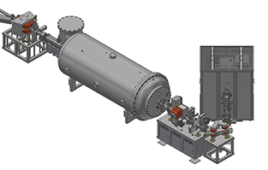With the help of
a $2 million grant from the U.S. Office of Naval Research, mechanical engineers
at the University of Wisconsin-Madison will develop a tool to characterize the
performance of a new class of alternative fuels that could be used in maritime vehicles
such as submarines and aircraft carriers.
With fossil
fuels a limited resource largely controlled by other nations, the U.S. Navy—the
largest user of diesel fuel in the country—understandably is interested in
alternative fuels that can be produced in the United States.
However, the
Navy has some unique needs for powering its fleet of ships, submarines,
aircraft carriers, and other marine vessels: The fuels can’t mix with water,
nor can they be readily flammable. This excludes most existing biofuels.
A new type of
diesel biofuel, called hydro-treated vegetable oil (HVO), could be the answer
for maritime vessels. It’s just a matter of determining which, of many possible
blends, performs best in an engine. Every fuel has a unique combination of
traits, including how hot it burns, how its different components interact, and
how quickly the combustion reaction starts.
And as an
alternative to expensive, time-consuming tests of each of these traits for
every candidate fuel, Rolf Reitz, Wisconsin Distinguished
Professor of mechanical engineering at UW-Madison, will lead a project to
create a tool for modeling fuel properties.
In fact, Reitz
and his colleagues in the UW-Madison
Engine Research Center will use the distribution of components in the
fuel themselves to predict a fuel’s performance in an engine. For example, all
fuels contain different proportions of various types of chemicals, such as
aromatic compounds. While each is slightly different, aromatics as a group
behave similarly in combustion experiments, and Reitz’s team will characterize
how the proportion of aromatic compounds in a fuel affects its behavior in the Engine Research
Center suite of test
engines.
With rigorous
experimentation on a variety of fuels, Reitz says the team can create a
world-class model that predicts a fuel’s behavior based solely on its chemical
breakdown, allowing the Navy-and eventually, anyone else-to more easily select
the best HVO blend for its needs.
“This tool
can help them assess whether that fuel makes sense without having to do
laborious extensive testing,” Reitz says. “They’ll still have to do
some testing, but this lets them eliminate certain classes right off the bat.”
Source: University of Wisconsin-Madison




